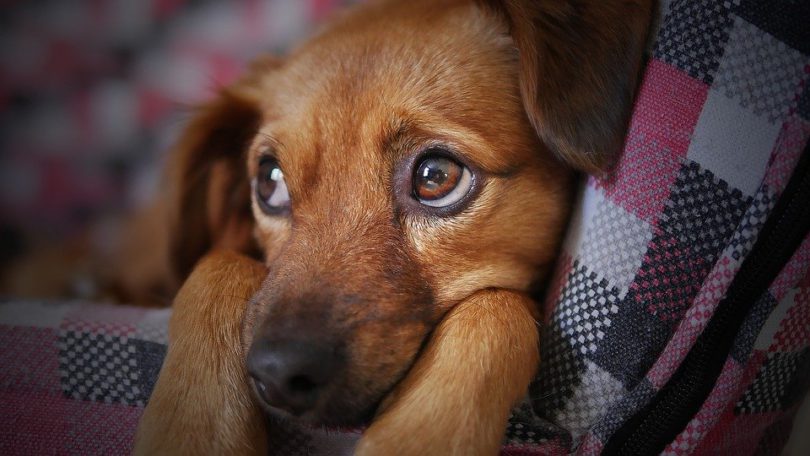Our pups are often our best friends. We love them with all our hearts, and we would do anything for them. It pains us to see them in distress, especially when we cannot do anything about it. Fireworks, loud cars, traveling, thunderstorms, and large crowds are common stressors for dogs. We may feel helpless as we watch them get stressed but there are several things, we can do to help them. Before we dive deep into that, what are some behaviors to look for in your stressed-out pups?
Common Anxiety symptoms in dogs
Common symptoms of anxiety in dogs can include consistent barking or whining, chewing, digging, biting, and other destructive things, aggression, panting, trembling, pacing, loss of control with their bladder or bowel, elevated heart rate, running or hiding, wide eyes, curling into themselves (ex: curling their tail in and tucking their ears close to their forehead).
When your dog exhibits some of these behaviors, it can be easy to get made and punish them (after all, nipping at people or going to the bathroom indoors are usually punishable offenses), but these are not because your dog is trying to be disobedient. It is their natural reaction to what is happening around them and yelling at them will make it worse.
Instead, you will need to maintain a calm tone of voice and a relaxed posture. These things together will help your dog calm down.
A common solution: Benadryl
In humans, Benadryl has a tiring and calming effect. What about dogs? Your first question might be about the safety of giving a dog Benadryl and the technical answer is yes as long as it is a small dose.
Now for the second question: is it effective? This time the answer is not really. Benadryl has a much smaller effect on dogs than it does on humans. The sedative effects will be much lower. It may help some, but not as much as you were probably hoping.
So, if Benadryl is not a good solution, what is?
Solutions for anxiety in dogs
The first thing you should look at is your own demeanor. Your dog looks at you for guidance, and if you are anxious, so is your pup. Make sure you are calm and relaxed so that your dog knows everything is okay. For mild cases, this will help out.
For moderate to severe cases, look at specialized mats and vests. These are more geared towards thunderstorm phobias and they have shown to be a massive help for dogs who affected by the static in the air.
Finally, if your pup is easily terrified of loud noises, get other noises to distract them. Find a good television program. Play some music (studies show that the concentrated beat of rap music is the most helpful during events like fireworks and thunderstorms. The dog expects a beat so when a surprise one comes, it is less scary). White noise can also be helpful, although it may be best to not use thunderstorm sounds.
Finally, if your dog has a very severe case, talk to your vet about a prescription.

